Practicing Reciprocity in Graduate Research by Integrating Youth Engagement and Cultural Education
Our School of Marine and Environmental Affairs Capstone Project focused on understanding the impacts of erosion and flooding along the Kuskokwim River in Alaska. As a part of our weeklong visit to the area in August of 2022, we spent six days in the Akiak Native Community working and learning alongside students and their teachers as a part of the Yupiit School District’s Summer Culture Camp. The following is a reflection on that experience.
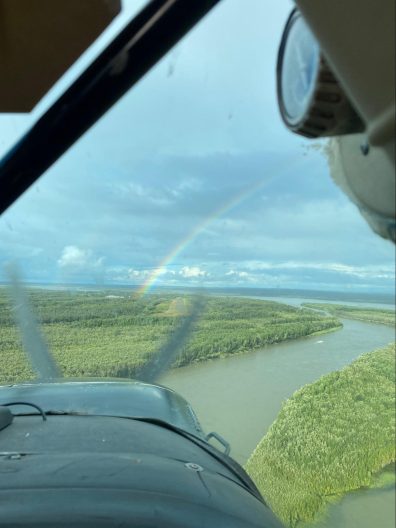
Erosion on the Kuskokwim
Last August, our bush plane skidded to a stop on a remote airstrip under the arc of a rainbow. From the air we could see the Kuskokwim River snaking below us, braided amongst tundra and spruce forests. We flew to Akiak from Bethel, the regional hub of the Yukon-Kuskokwim Delta, after arriving from Seattle the night before.
Akiak, a Yup’ik village home to around 400 people, is about 40 miles upriver from Bethel. Like many other Alaska Native communities in this region, Akiak has experienced severe erosion events in recent years. Although there is no decisive consensus on what causes these events, contributing factors may include increased storm intensity, precipitation, and temperature, as well as specific soil characteristics in the area. Huge swaths of the river’s banks have been rapidly crumbling into the river in a matter of hours, threatening everything from schools and utility infrastructure to salmon smokehouses and homes.
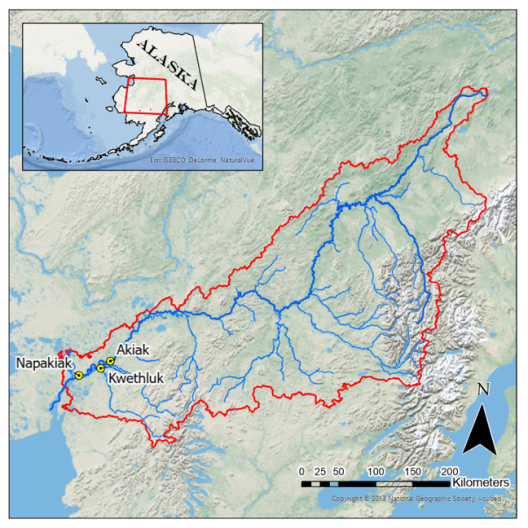
In an attempt to mitigate the disastrous impacts and understand the extent of the threat, communities along the Kuskokwim have been seeking funding and support for adaptive measures and research. Four communities in the area are currently working together to develop disaster response and mitigation plans. Their engagement with our capstone client, Dr. Cassandra Rutherford from Iowa State University (ISU), is what prompted our visit to Akiak this last summer. Funded by a National Science Foundation (NSF) planning grant, the interdisciplinary team of engineers, geologists, and hydrologists from ISU aims to help fill the gaps in existing hydrological data and co-generate potential adaptive strategies with the four communities. Since its inception, this project has aimed to not only produce actionable, community-driven research, but also foster reciprocal relationships with community members, especially students. Therefore, coming from SMEA, our role in the project was twofold: 1) to interview community members and facilitate a workshop to understand how erosion is impacting life on the Kuskokwim as well as determine community concerns and priorities, and 2) to make connections and build relationships with teachers and students in the area, which ultimately led to our engagement with the youth in Akiak.
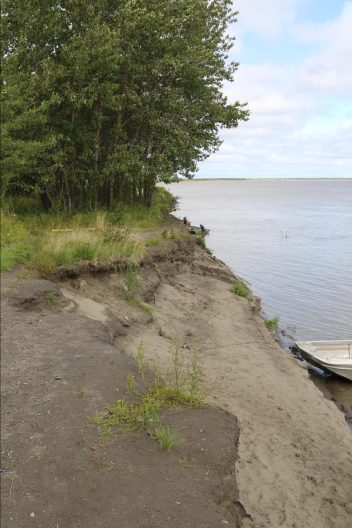
Yupiit Piciryarait (Way of Life)
Upon landing in Akiak, we were picked up by the school principal. Over the next few days we were welcomed by students and teachers alike to participate in their summer school activities. The Yupiit School District (YSD), which includes schools from the communities of Akiak, Akiachak, and Tuluksak, began implementing Culture Camp to grow its Yupiaq education curriculum. Under the direction of Mikic/Aqvang George, the initiative aims to “strengthen and support the Yup’ik Identity of the students through the Yupiit Piciryarait (Way of Life).” This curriculum is based on several pillars, or cultural standards, including subsistence, survival, cultural expression, and health and wellness.
Since time immemorial, Yup’ik families have moved along the river in accordance with seasonal availability of food, medicine, and other materials. While some families still travel seasonally to fishing and hunting camps, the imposition of settler colonial economic, political, and social systems by the U.S. government resulted in many communities settling permanently in one location. Today, many parents are busy working full-time jobs to support their families, limiting their ability to practice subsistence. Due to these constraints, fewer children are growing up experiencing life at seasonal subsistence camps and as a result, are not exposed to the Yupiit Piciryarait.
As a part of Summer Culture Camp, students participated in a wide array of subsistence activities including berry picking, medicinal herb gathering, fishing, camping, and food preparation and preservation. Children who may not usually have the opportunity to practice these skills were taught by elders and cultural practitioners, facilitating vital knowledge sharing and transmission. In a video we co-produced with the school district, board member and former Alaska state legislator, Ivan Ivan, stated, “It is important information for the children to know their history and way of life, as we call it–Yuyuraq–the way of living.”
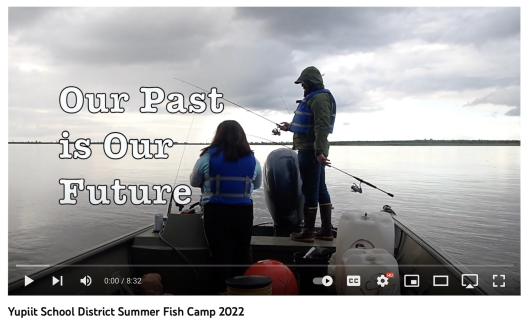
Facilitating student engagement in research
Throughout our time in Akiak, we worked closely with one specific class of third through fifth graders to help them document the erosion occurring in their community through the usage of photo, video, and audio recordings. For several months prior to our visit, we worked with Alberta (Bede) Demantle, a teacher at the school, and Woody Woodgate, the YSD Federal Programs Director to develop a project that would enable us to practice reciprocity and begin building a relationship between our research team and the community of Akiak. Bede was already planning on documenting her students’ experiences, so we volunteered to put together a video showcasing this. Students were able to walk us to locations where large erosion events had occurred and tell the story from their perspective. After some quick training with the audio recorders and cameras, they interviewed community members about their experience with and perspectives on erosion. Each day, knowledge was exchanged; students learned about interviewing, photography, filmmaking, and erosion while we learned about life on the Kuskokwim.
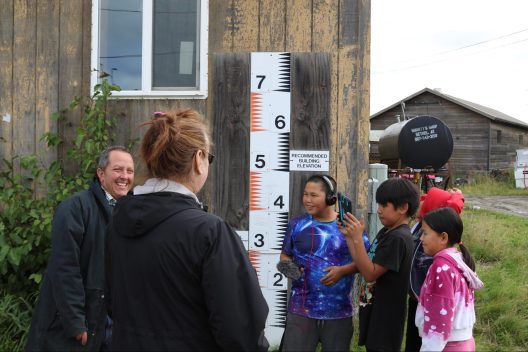
Incorporating this type of community engagement in a research project is not easy or straightforward but can be immensely beneficial for both parties involved. In light of historical harms perpetrated by scientists and researchers in Indigenous communities (both in Alaska and worldwide), fostering reciprocity and responsibility should be a priority in engaging with Indigenous communities in a research context. As graduate students of a two-year program like SMEA, we only work on a capstone project for about a year. Realistically, this is not nearly enough time to build relationships grounded in trust and accountability. However, we hope ongoing work with community partners on the Kuskokwim will build upon the initial connections and relationships we developed.
As of now, we’ve completed one video for the YSD on Culture Camp and are currently in the process of editing the footage captured by students into a video the class can then share with the school and broader community. Additionally, our colleagues at ISU are compiling information and data collected to convey to communities on the Kuskokwim what may be achievable through a fully funded, multi-year NSF research grant if they decide to undertake a larger study.
“We did not want our children to lose that”

At the end of our stay, we were invited to spend a night at Bede’s family fish camp with a group of older students. Motoring up to the campsite by a small aluminum fishing boat, evidence of erosion was everywhere; trees tumbled into the river, chunks of vegetated bank hung precariously over drop-offs. Although we glided gently up to camp, we all had to scramble up a set of stairs built into the face of the steep, unstable embankment. Our hosts told us about how they’ve had to move the small white cabin nestled back in the woods twice to protect it from the encroaching river. Other families have had to abandon their traditional camping grounds or had drying racks and smokehouses swept away, further illuminating the impact erosion is having not only on safety and infrastructure, but on subsistence livelihoods.
Around the fire, we swapped stories and shared salmon, and our hosts told us more about how much life has changed in Yup’ik communities and their hope for future generations, thanks to efforts like the YSD’s Yupiaq education initiatives. Woody, who helps run the district’s programming, elaborated on how they hope to restructure the school year around the subsistence calendar to more holistically incorporate Yupiit Piciryarait into students’ daily lives and education.
While at fish camp, students are encouraged to contribute to camp life through cooking, cleaning, and tending the fire. Simultaneously, they learn how to appropriately and safely behave in the wilderness. Don’t yell and shout because it attracts animals, keep your environment clean, share what you have with everyone, and be respectful of one another are all rules a child learns at fish camp. School board member Peter Gregory explains, “All these instructions in this modern world have been getting lost in other Indigenous tribes. We did not want this loss, we did not want our children to lose that.”
With environmental concerns like erosion, partnering with outside institutions like universities has the potential to be a fruitful way to move projects forward. But for those of us entering a space as outsiders, we need to constantly consider how we can foster reciprocity and relationship building to better support our collaborators holistically. This includes lifting up and bolstering efforts like the YSD Culture Camp and engaging youth with research to develop skills and share knowledge. Although we’re graduating from SMEA in two short weeks, we’re hopeful to see where this project goes and to stay in touch with our friends in Akiak. We wish them all the best for this summer’s camp coming up in June!